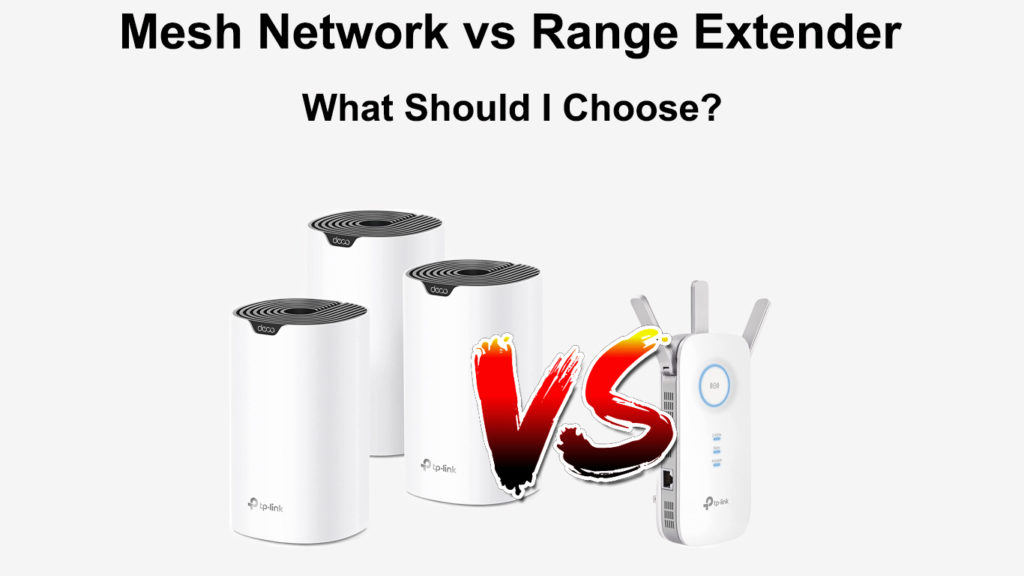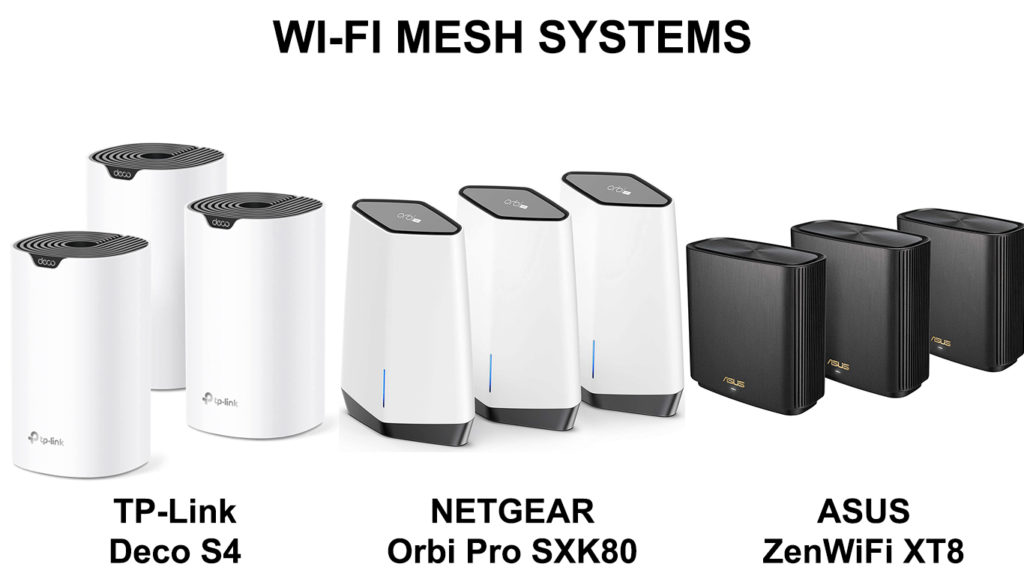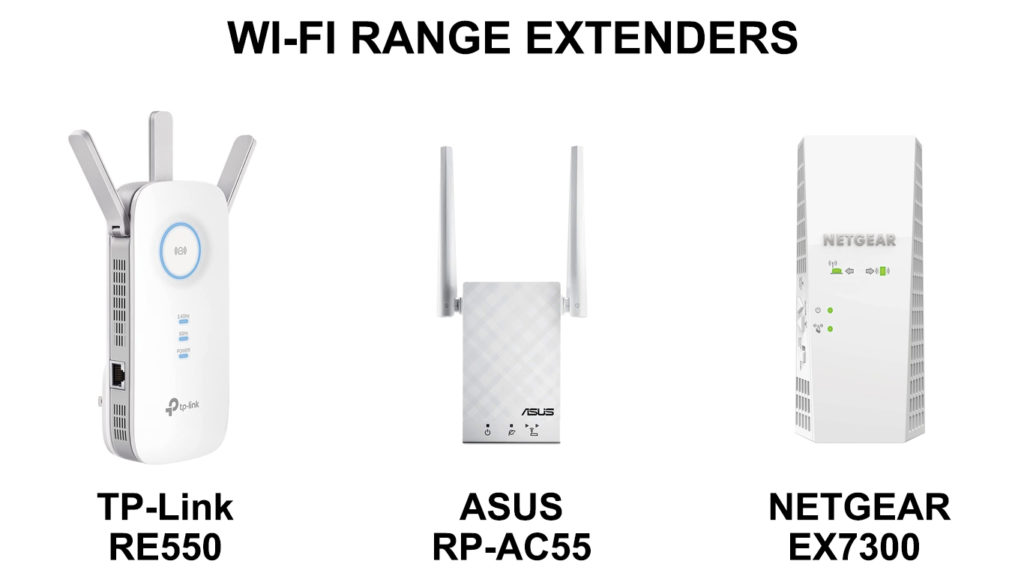If you live in a large house with plenty of rooms, you might experience issues with your internet connection.
Dead spots or zones, weak signals, and slowdowns are some of the network problems associated with large spaces.
Even worse, your Wi-Fi router might be in some far-flung corner of your living room rather than centrally, preventing your devices from establishing a stable connection.
Fortunately, these home networking issues are not permanent. You can improve your Wi-Fi coverage by creating a mesh network or using a range extender.
With these network upgrades, you can enjoy fast and instant internet access from wherever you are within the precincts of your home.
This post explains the differences between a mesh network and a range extender to help you decide which one is ideal for boosting your Wi-Fi coverage.
Keep reading to discover the best fit for your networking needs.

CONTENTS
What is a Mesh Network?
A mesh network is a local networking solution in which several devices or nodes connect and communicate with each other, providing better internet coverage.
These devices link together and branch off from each other wirelessly or through wires, creating a mesh-like networking infrastructure, hence the name.

Unlike a typical wired or wireless network that relies on a single router to broadcast signals, each node on a mesh network relays signals, ensuring internet access throughout the space.
An extensive mesh network may consist of several routers, hubs, switches, and bridges that act as nodes, covering a larger area. The network creates multiple paths for data transmission, guaranteeing stable and more reliable internet connectivity.
The nodes automatically self-configure, allowing for dynamic data transfer if one or two nodes fail.
Mesh networks can be wireless or wired and function as full or partial mesh networks. In a wired network, the nodes link to each other via cables, while a wireless mesh network consists of radio nodes that communicate wirelessly.
Each node links to every other node in a full mesh network, meaning they can communicate directly. In a partial mesh network, not all devices connect, meaning some nodes have to pass through other nodes to relay signals.
What is a Mesh Wi-Fi?
How Does a Mesh Network Work?
Mesh networks work using data transmission techniques such as routing and flooding to transfer signals to other connected nodes.
With routing, data signals hop from one node to the next until they reach their target destination, while with flooding, data moves from a particular node to the rest of the network
In a typical internet connection, all communication passes through a single router. With a mesh network, data transmission does not rely on one router but on multiple nodes set up throughout your space.
The nodes on a mesh network have an integrated software program that automatically configures the devices and determines which data transmission technique to use.
The software program installed on the nodes also decides which path the data will travel to the connected devices, ensuring fast and uninterrupted internet connections.
Since you do not have to configure the network, a mesh network has reduced installation overheads compared to other networking solutions.
What is a Range Extender?
A range extender is a standalone networking device that extends your internet coverage to far-flung areas within your home, effectively eliminating dead zones and spots.
As you get farther away from your router, the signal strength drops, and you might experience slowdowns or no connection altogether. A range extender extends the signal range, so you stay online wherever you are.
It acts as a bridge between your router and your wireless device that is probably out of range, restoring its connection and improving network speeds in the problem area.

This networking gadget communicates with your router through a wired or wireless connection to create a second network with a separate SSID name for your wireless devices.
Your Wi-Fi-compatible devices will now connect to the second network created by the range extender rather than the primary network from your router.
Like with a router, the position of the range extender is critical since it determines the strength of the received and extended signal.
Ideally, consider positioning the extender centrally within the problem area to eliminate dead spots.
Wi-Fi Range Extenders Explained
How Does a Range Extender Work?
A range extender sits between your router and devices, and it works by bridging the distance from your wireless router.
The extender communicates with your router wirelessly or through a wired connection before broadcasting received signals to problematic areas.
It creates a separate network by duplicating your router’s network, complete with a unique SSID name, meaning you may have to search for the new network and enter a password to access the web.
Thanks to the improved coverage, any device that connects to this new network can access the internet quickly without interruptions, even in areas previously considered dead zones.
Setting up a range extender is not automatic. You must configure the device using your phone or PC to connect it to your primary Wi-Fi network.
The good news is that the installation process is not complex, and you can obtain the necessary info on the setup from the user manual or the brand’s website.
Differences Between a Mesh Network and Range Extender
The function of a mesh network and range extender is to improve your Wi-Fi signal strength and network coverage.
Even though these networking technologies might seem strikingly similar, they are considerably different in their functional operation.
Here are the significant differences between a mesh network and a range extender:
- Operation
Mesh networks overhaul your entire Wi-Fi network, including your router, to create an extensive seamless network that covers your entire space. It consists of nodes that use artificial intelligence to transmit data quickly throughout your home or office, especially in areas with poor signals.
A range extender does not replace your Wi-Fi network but rather extends it by creating a second network in problem areas. The extender communicates directly with your router, receives signals, and rebroadcasts the data to the newly created network.
- Configuration
Mesh networks consist of nodes that have integrated software programs. These programs use artificial intelligence to self-organize and configure the nodes without your intervention.
In contrast, you must set up your range extender via a smartphone or PC before using it. Configuring the extender can be challenging if you don’t know what to do or where to start. This hurdle can lead to increased installation overheads.
- Efficiency and Performance
Mesh networks are comparatively more efficient than range extenders. They use different data transmission techniques such as flooding and routing to transmit signals. Besides, each node can communicate with every other node on the network, ensuring a stable and more reliable internet connection.
Range extenders are efficient but not as effective as mesh networks. The position of the extender matters a lot and can make the difference in eliminating dead zones and establishing a stable internet connection.
- Application
Since mesh networks ensure equal network strength throughout your space, they are ideal for various applications such as online gaming, video streaming, home monitoring, and security systems.
Even though range extenders extend your network to problem areas, they do not guarantee consistent signal strength. For this reason, they might be ideal for regular browsing, light gaming, and streaming.
- Cost
Mesh networks are comparatively more expensive to set up than range extends. You must buy several devices to work as nodes, including bridges, hubs, switches, and mesh Wi-Fi routers.
As far as a range extender is concerned, you only need to purchase the device from a reputable vendor, and you are good to go. This makes an extender a cheap and affordable option.
Mesh Wi-Fi VS Range Extender
Pros of a Mesh Network
Stable Internet Connection
Mesh networks come programmed and use artificial intelligence for data transmission. They employ various proven techniques such as flooding and routing to transmit network signals to your devices, guaranteeing a stable and more reliable internet connection. Moreover, the failure of single nodes does not interfere with the entire network since the remaining nodes make up for the deficit.
Improved Network Coverage
A mesh network can transmit data over a more extended distance than other topologies, effectively eliminating dead spots in large spaces. It overhauls the existing Wi-Fi network, creating a seamless and more efficient internet connection with a range of over 5,500 square feet. Besides, it is less prone to interference since the network consists of several nodes working simultaneously.
Enhanced Security
Even with the numerous security mechanisms today, it is still easy for a hacker to intercept data signals over a wireless network. Fortunately, this is not the case with a mesh network. After all, mesh networks consist of several nodes, meaning you can isolate or replace any compromised node to protect your network.
No Intermediary Connections
The nodes on a mesh network do not have to go through a single router to communicate, as with other networks. Instead, the nodes relay messages to each other directly. There is no central access point that determines data transmission.
Automatic Configuration
Setting up a mesh network is a straightforward task. The nodes on a mesh network feature an integrated software program that automatically configures the devices. You do not have to do anything beyond positioning them in your space to improve signal coverage.
Reduced Power Consumption
Since mesh networks do not communicate via a central access point, the different nodes consume less power. They do not have to transmit data intensely to a far-flung router across the hallway. As a result, this reduces power consumption and promotes energy efficiency.
Cons of a Mesh Network
Relatively Expensive
Setting up a mesh network is comparatively more expensive than other network configurations. You may have to purchase several nodes to cover a broader area, raising the initial setup costs. In some cases, you might require a switch, bridge, or hub to act as additional nodes.
Complex Troubleshooting
Even though a mesh network allows you to replace faulty nodes, identifying the defective nodes can be an issue, especially with an extensive network. The more complex the network is, the harder it becomes to troubleshoot common problems.
Latency Concerns
In a mesh network, data signals hop from one node to the next until they reach their target destination. Every hop can cut network speeds marginally, causing latency issues. Fortunately, the reduced transfer rates are barely noticeable and make no difference.
Pros of a Range Extender
Affordable Networking Option
If you are searching for an inexpensive way to extend your network, consider purchasing a range extender. This device is affordable, and you don’t need any other gadget to increase your network range.
Eliminates Dead Zones
Range extenders effectively eliminate dead zones from your space, ensuring adequate network coverage. However, the position of the extender should be strategic, preferably centrally, in the problematic areas to enhance signal strength and provide a stable connection.
Compatible with Regular Routers
When you buy a range extender, you don’t have to discard your router. A range extender works by creating a new network using signals from your Wi-Fi router. The device communicates directly with the router to ensure a stable connection in hard-to-reach areas.
Cons of a Range Extender
Inconvenient Network Connection
Since a range extender creates a new network complete with a unique SSID name, you have to log into the new network afresh. Switching from your router network to the extender and back again can be inconvenient.
Low Security
A range extender sits between the router and your devices. Signal transmissions between these devices are easily interceptable since an extender does not have any security mechanisms enforced. It might take time before you notice any hacking or malicious activities.
Limited Coverage
A range extender might not be ideal for large, expansive spaces with multiple floors. Most extenders have limited coverage not exceeding 2,000 square feet.
Conclusion
Mesh networks and range extenders are excellent options for improving network coverage and signal strength. However, when choosing between the two, a mesh network is superior to a range extender.
A mesh network covers the entire space. It uses artificial intelligence to communicate with other nodes, eliminate dead zones, and boost signal strength, guaranteeing a stable and more reliable internet connection.
Moreover, mesh networks have more significant coverage than range extenders, making them an ideal networking solution.

Hey, I’m Jeremy Clifford. I hold a bachelor’s degree in information systems, and I’m a certified network specialist. I worked for several internet providers in LA, San Francisco, Sacramento, and Seattle over the past 21 years.
I worked as a customer service operator, field technician, network engineer, and network specialist. During my career in networking, I’ve come across numerous modems, gateways, routers, and other networking hardware. I’ve installed network equipment, fixed it, designed and administrated networks, etc.
Networking is my passion, and I’m eager to share everything I know with you. On this website, you can read my modem and router reviews, as well as various how-to guides designed to help you solve your network problems. I want to liberate you from the fear that most users feel when they have to deal with modem and router settings.
My favorite free-time activities are gaming, movie-watching, and cooking. I also enjoy fishing, although I’m not good at it. What I’m good at is annoying David when we are fishing together. Apparently, you’re not supposed to talk or laugh while fishing – it scares the fishes.
